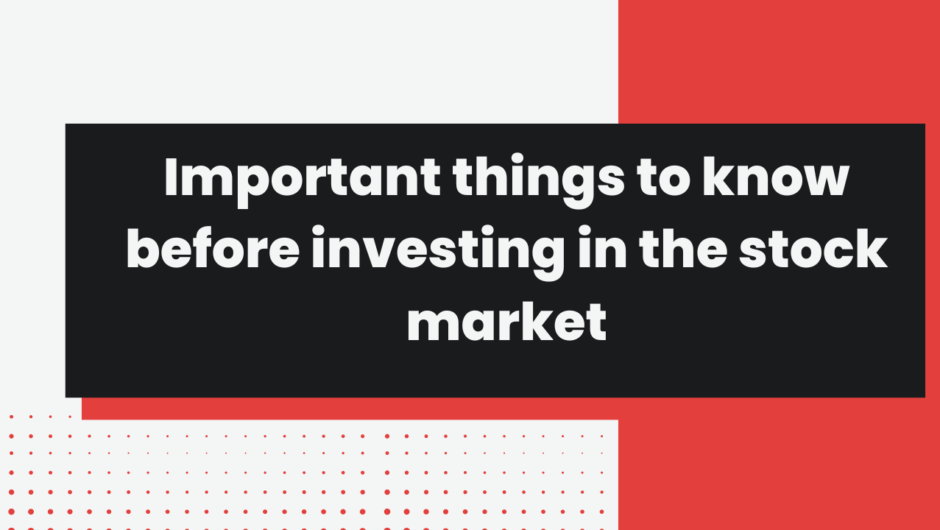Investing is a great way to rack up wealth, but it is important to understand the potential risks associated with different types of investments. This piece will provide vision into the various risks linked to different types of investments, as well as strategies to help investors make informed decisions and maximize their profits. Knowing the potential risks and how to reduce them can give investors the confidence to make wise investments and reach their financial goals.

Types of Investment Risk
Investment risk is an unavoidable part of investing and can be separated into four distinct categories: market risk, credit risk, interest rate risk, and liquidity risk.
- Market Risk: Market risk is the risk that a security’s value will decrease due to changes in the stock market, commodities market, or currency exchange rate. Market risk is difficult to predict and can be caused by economic downturns, natural disasters, political uncertainty, or other unforeseen events.
- Credit Risk: Credit risk is the risk that a borrower will not pay back a loan or other debt. This type of risk is especially relevant for investors in bonds, as bond prices are often determined by the issuer’s creditworthiness.
- Interest Rate Risk: Interest rate risk is the risk that a security’s value will decrease as interest rates rise. This type of risk is especially relevant for investors in fixed-income securities, such as bonds, as their value is directly linked to interest rates.
- Liquidity Risk: Liquidity risk is the risk that an investor will be unable to sell an asset quickly due to a lack of buyers or market depth. This type of risk is especially relevant for investors in illiquid assets, such as real estate or private equity funds.
Investment risk is an unavoidable part of investing and understanding the different types of risks is essential to making informed decisions. By understanding the different types of risks, investors can better assess the risks associated with their investments and make more informed decisions.
Techniques to Manage Investment Risk
- Diversify Your Investments: It is one of the most effective ways to manage the risk. It involves investing in different assets, such as stocks, bonds, and commodities, in order to spread out your risk. This way, if one asset performs poorly, it is less likely to have a large impact on your overall body.
- Utilize Hedging Strategies: Hedging is a risk management strategy used to reduce the volatility of an investment portfolio. It involves buying and selling different investments in order to offset any losses that may occur in one asset. This can help to minimize the impact of a volatile market on your portfolio.
- Understand Your Risk Tolerance: Knowing your risk tolerance is an important part of managing investment risk. Your risk tolerance is the level of risk you are comfortable taking on. Different investors have different risk tolerances, so it is important to understand yours before investing.
- Monitor Market Conditions: It is important to monitor market conditions in order to stay informed about any changes that could affect your investments. Knowing when to buy, sell, or hold an asset can help you manage your investments and reduce the risk of losses. Keeping an eye on the news and market trends can help you stay ahead of any potential risks.
FAQ
What are some of the types of risks associated with investment?
Common types of investment risks include market risk, inflation risk, liquidity risk, political risk, and credit risk.
How does market risk affect investments?
Market risk is the risk of an investment‘s value changing due to overall market movements. It is affected by economic conditions, geopolitical events, and changes in supply and demand.
What is inflation risk?
Inflation risk is the risk that an investment‘s value will be eroded by inflation. This can happen when the rate of inflation is higher than the rate of return on an investment.
What is liquidity risk?
Liquidity risk is the risk that an investment cannot be converted into cash quickly at a reasonable price. This can happen when there is a lack of buyers or sellers of an asset.
What is political risk?
Political risk is the risk that a political event or decision will adversely affect the value of an investment. This can include changes in government policies, regulations, or taxes.
What is credit risk?
Credit risk is the risk that a borrower will be unable to repay a loan or other debt. It is most commonly associated with bonds and other fixed–income investments.
How can I manage investment risks?
Risk management is an important part of successful investing. Risk management techniques include diversification, hedging, and active monitoring of investments.
What is diversification?
It is a risk management technique which involves investing in a number of asset classes. It helps to reduce the risk of an investment portfolio by spreading the risk across multiple assets.
What is hedging?
Hedging is a risk management technique that involves buying or selling financial instruments to offset potential losses from an investment. It can be used to reduce the volatility of an investment portfolio.
How can I actively monitor my investments?
Active monitoring of investments involves regularly reviewing the performance of your investments and making adjustments when necessary. This includes researching potential investments and staying up to date on market news and trends.
Conclusion
Investing is a great way to build wealth, but it is important to be aware of the risks that come with different types of investments. This article will aware you about various risks related to different types of investments, as well as strategies to help investors make informed choices and increase their returns. Understanding the risks and how to minimize them can give investors the confidence to make sound investments and attain their financial objectives.












